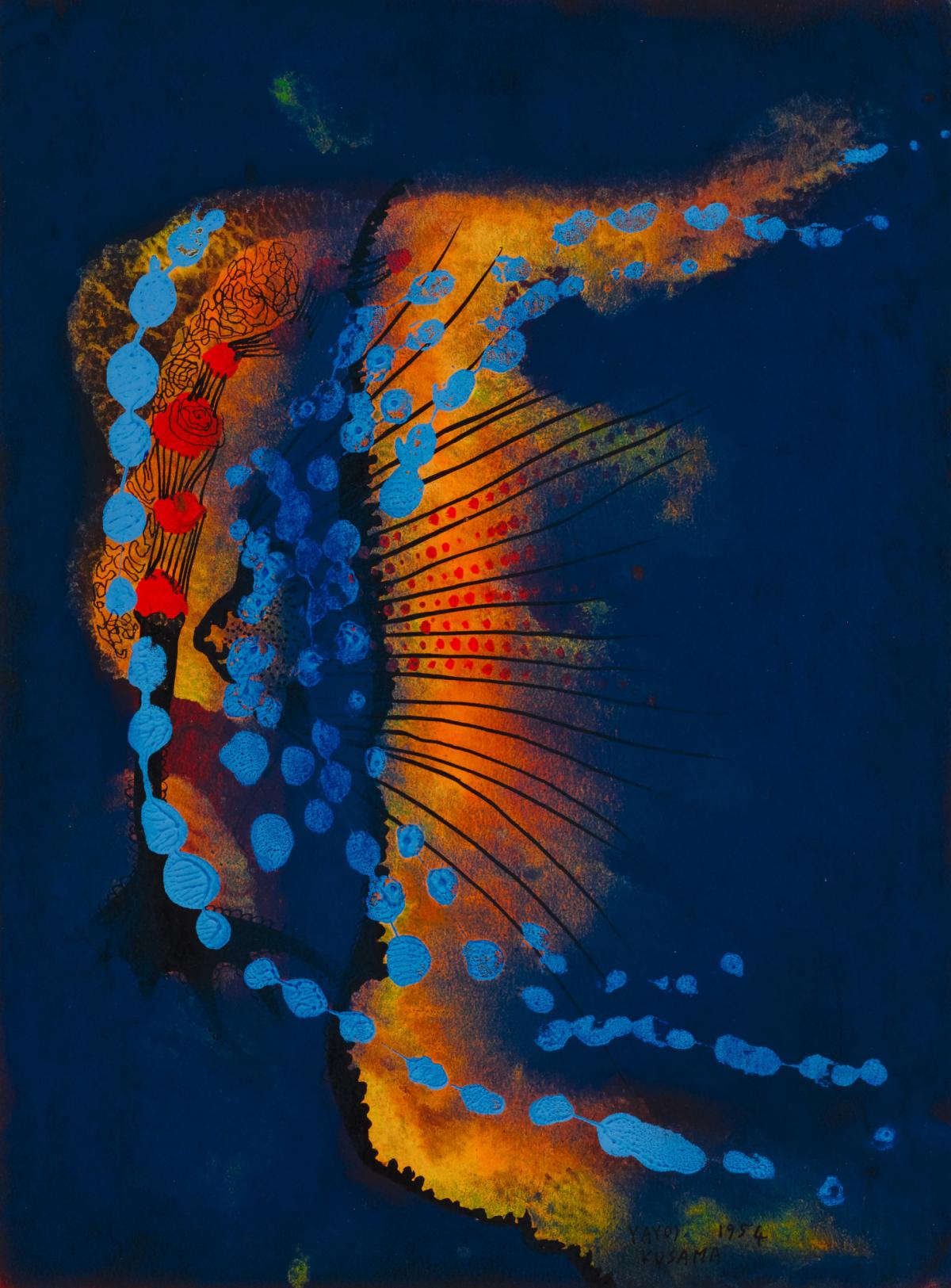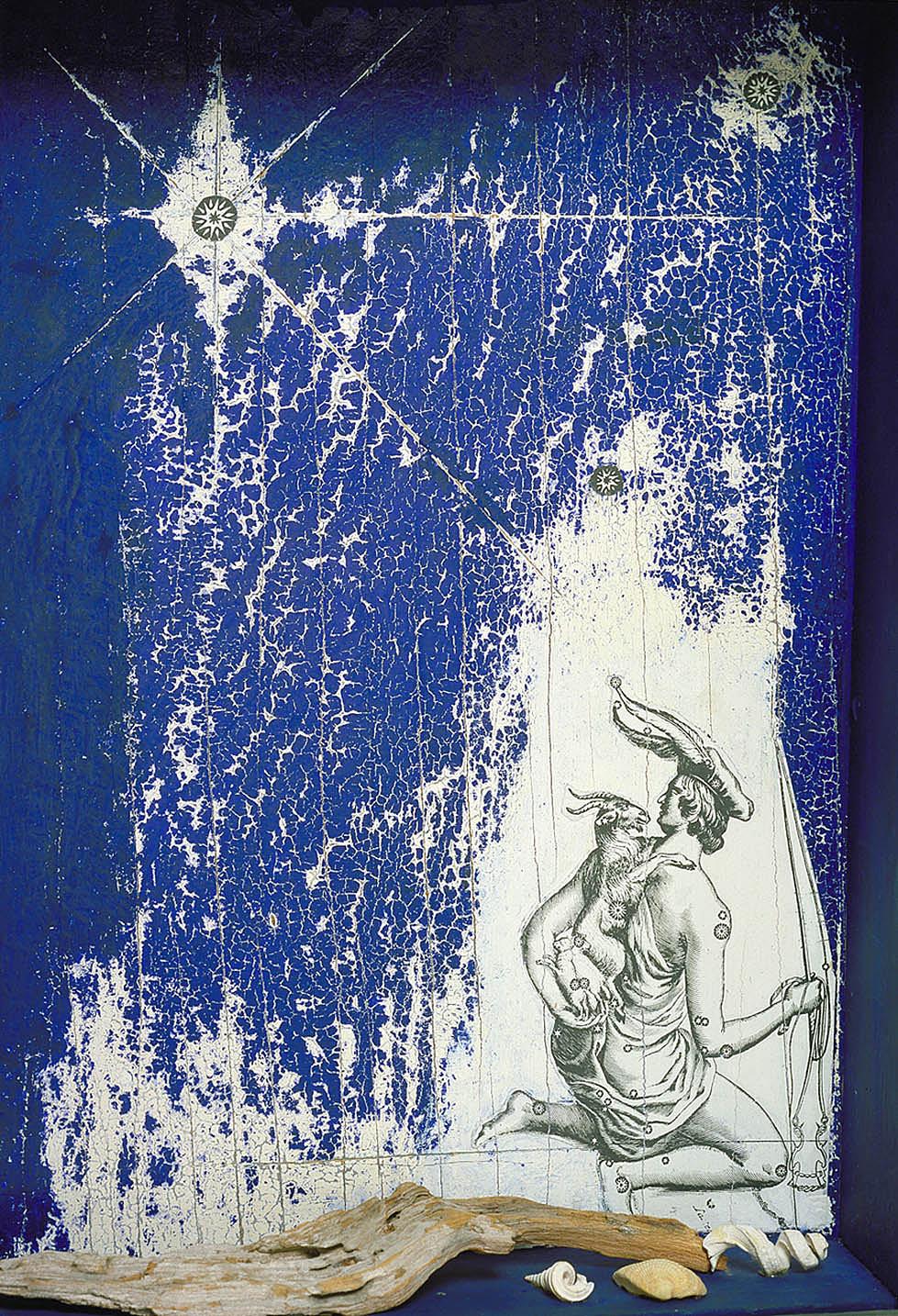
With all the online chatter this week about bad art friends and people responding to the article that appeared recently in The New York Times Magazine, I thought we might turn our attention to SAAM’s new exhibition, which shines a different light on artist relationships. Artist to Artist takes a close look at mentors and mentees, lovers and friends, students and teachers and how they influenced each other’s lives and art. I propose, with tongue only slightly in cheek, that these fall under the heading of good art friends.
As Melissa Ho, the curator of twentieth-century art who assembled the exhibition states, “Two artists caring about one another’s work is fundamental to the creation of any art 'world,' large or small.” Take Joseph Cornell and Yayoi Kusama, who are represented in the exhibition by a box construction and two watercolor paintings. In 2018, these paintings, along with two others by Kusama, were discovered by an archivist working in SAAM's Joseph Cornell Study Center. The drawings made their public debut earlier this month, marking the first time they have ever been exhibited.
As Melissa Ho writes in the exhibition text:
“Birds of a Feather”
Preserved in SAAM’s Joseph Cornell Study Center is a note sent to Cornell by Kusama that reads: “You & me—birds of a feather.” Taped beside these words are two feathers of sharply contrasting hue—one bright red, the other downy white—aptly standing in for this odd artistic couple, born twenty-six years and a hemisphere apart. Kusama left her native Japan in 1957 and spent sixteen years among the New York avant-garde developing an innovative body of work that includes the patterned paintings and immersive mirrored rooms for which she remains celebrated today. Cornell never traveled, living quietly with his widowed mother and invalid brother in Flushing, New York, for most of his adult life. There he conjured worlds within boxes and frames, using materials collected from bric-a-brac shops, souvenir stands, and bookstores. His distinct collages and assemblages mingle fantasy and reality, reverie and regret.
A Decade of Friendship
In her memoir, Kusama describes her relationship with Cornell as passionately romantic yet platonic. The two met in 1962 and maintained a close bond until his death in 1972, spending time sketching each other and speaking often on the phone. Cornell dedicated poems and artworks to Kusama and, knowing of her financial hardships, occasionally gave her pieces of his work to sell, allowing the younger artist to earn a commission. He also purchased drawings from Kusama. These riveting early drawings suggest microscopic or cosmological topographies, resonating with the dreamlike intimacy of Cornell’s own creations.
For more, read our story from 2019 about the discovery of “The Lost Kusamas” and learn more about how the archivist in charge of SAAM’s Joseph Cornell Study Center processed the contents of the avant-garde artist and filmmaker’s house.




















